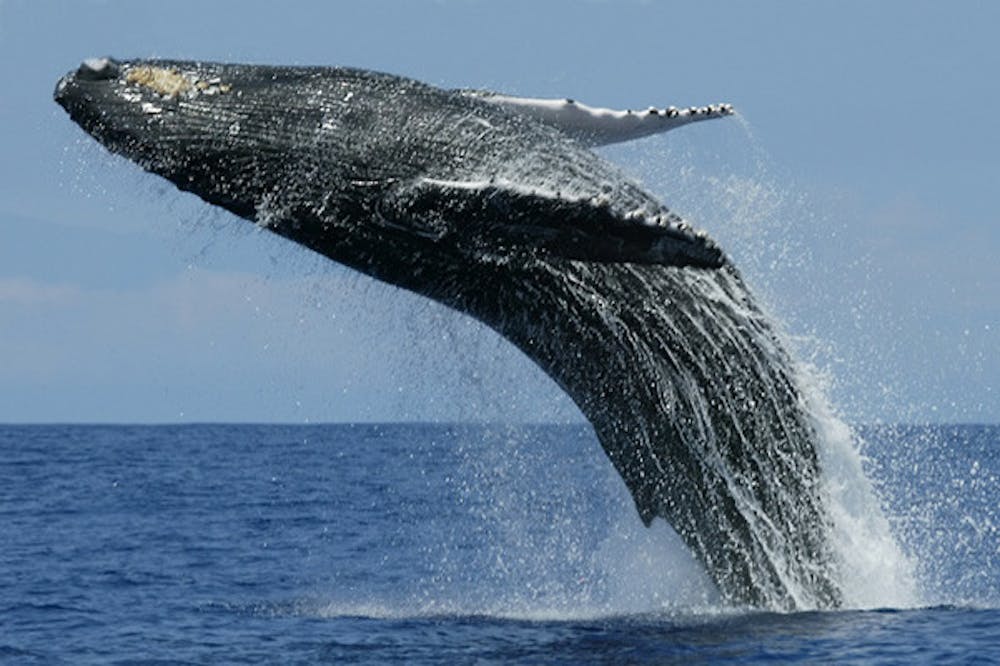Welcome back, Blue Jays! As the semester begins, The News-Letter’s Science and Technology section invites you to take a moment each week to learn about the exciting developments in STEM. Part of doing research is noting the research done by others, and we hope to provide you with a resource to do just that.
In the news this week are the impacts of ancient climate change on early humans, a new species of deep-sea bacteria, the discovery of new exoplanets and a survey of whale mutation rates.
Impacts of climate change on early human populations
A study published in Science suggests that the Homo genus experienced a severe population bottleneck between 930,000 and 810,000 years ago which reduced the number of breeding individuals globally to around 1,300. The researchers, led by Wangjie Hu at the Icahn School of Medicine at Mount Sinai in New York City, developed a Fast Infinitesimal Time Coalescent process (Fit-Coal) to calculate ancient population sizes based on modern DNA samples.
Fit-Coal works by analyzing the allele frequencies in present-day genomes from 50 distinct populations — 10 African populations and 40 Eurasian populations — and through a series of incremental steps backwards, simulates the most likely mutation development path. The bottleneck suggested by Fit-Coal aligns with a gap in the current fossil record and a period of glaciation and drought known as the "0.9 Ma event" that happened 0.9 million years ago in the middle Pleistocene transition.
While the study has been disputed, a critique was published simultaneously by two British researchers, it highlights human vulnerability in a constantly changing world.
NASA's Transiting Exoplanet Survey Satellite discovers new exoplanets
NASA’s Transiting Exoplanet Survey Satellite (TESS) has discovered several new, long-period exoplanets. Currently, there are over 5,000 confirmed exoplanets, however, 80% of them have short-period orbits, fully orbiting their respective star in under 50 days. This is partially due to the fact that TESS can only dedicate 28 days at a time to each sector of the sky that it surveys. As TESS detects exoplanets based on repeated transit between the Earth and the planet’s star, it favors planets with shorter orbital intervals.
This week, a group of astronomers at the Massachusetts Institute of Technology published the discovery of two exoplanets approximately the size of Saturn, TOI-4600 b and c, with orbital periods of 82.69 and 482.82 days, respectively. These mark the longest exoplanet periods currently known.
At the same time, astronomers led by astrophysicist Ares Osborn at the University of Warwick discovered a Neptune-sized planet named TOI-332 b orbiting its host star every 18.65 hours. However, the planet’s density is particularly notable, which comes in at 57.2 Earth masses with a radius of 3.2 Earth radii — compared to Neptune’s 17.15 Earth masses and 1.4 Earth radii. This places the new planet in the so-called "Neptunian desert," with period-mass and period-radius parameters largely missing from currently known exoplanets.
These twin discoveries expand our knowledge of exoplanetary systems and open the doors to future discoveries.
A new strain of deep-sea bacteria cultivated
A study conducted by the Chinese Academy of Sciences Institute of Oceanology and the National Laboratory for Marine Science and Technology in Qingdao, China has cultivated a new strain of bacteria named Poriferisphaera heterotrophicis (ZRK32). The bacteria fall into the broader phylum of Planctomycetes bacteria, which are near-universally present across the Earth’s biosphere. This particular Planctomycetes bacteria was lab-grown from deep-sea sediment samples.
ZRK32 is distinctive due to its use of a chronic bacteriophage — which would typically lead to cell death — to enable nitrogen metabolism. It is also the first known bacteria in the Phycisphaerae class to reproduce by budding, where a new organism begins as an outgrowth of an existing cell. The discovery offers new insights into the nitrogen cycle and the symbiosis between bacteria and bacteriophages.
How do whales avoid cancers? We don’t know.
Both evolution and cancers are driven by random mutations in DNA, which typically accrue across an organism’s lifespan. Thus, a species’ germline mutation rate — mutations originating in sperm and egg cells — is crucial in determining evolutionary processes and it has been hypothesized that low mutation rates lead to the low rates of cancer found in large mammalian species like whales. However, a team led by Marcos Suárez-Menéndez of the University of Groningen has estimated the mutation rate in four baleen whale species as similar to that found in primates, thus ruling out the possibility that whales avoid cancer due to their germline mutation rate.
The Groningen team compared the genomes of eight parent-offspring trios (including both parents and the child) of North Atlantic blue, fin, bowhead and humpback whales to determine their germline mutation rates. A survey of the Groningen article, published simultaneously, suggests that low cancer rates may be attributed to natural selection rather than mutation rates, but notes that further research is needed.





